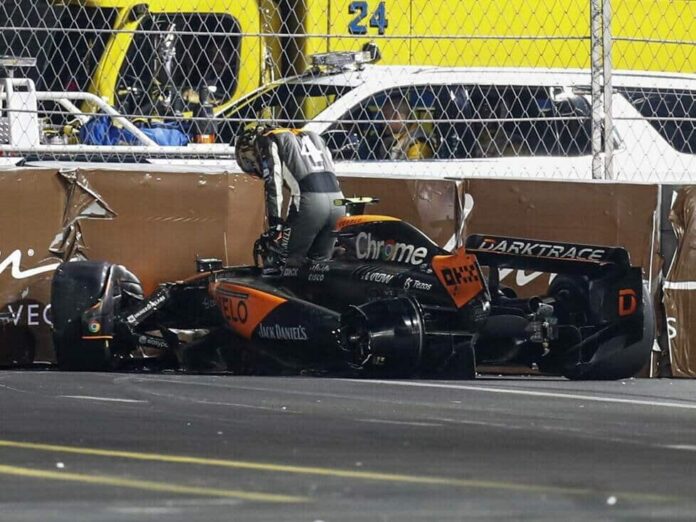Do the low ride heights in Formula 1 endanger safety? – Even after the accidents involving Lando Norris and Carlos Sainz, the FIA does not want a minimum ground clearance
To this day, the touchdown of the car in the Tamburello corner and the associated stall on the diffuser is considered one of the possible causes of Ayrton Senna’s fatal accident. The accidents involving Lando Norris in Las Vegas and Carlos Sainz in free practice in Abu Dhabi have brought the issue back to the table in Formula 1
However, the FIA currently sees no reason to intervene in the ground clearance of Formula 1 cars. Since the return of the ground effect in 2022, the following has applied more than ever in Formula 1: the lower, the faster. The closer the underbody is to the asphalt, the more downforce it can generate.
Combined with low tire pressure (which reduces ground clearance even further) and full tanks at the start of a Grand Prix, this creates a potentially dangerous situation.
The FIA has the right to intervene in the regulations when it comes to safety. Jean Todt, for example, exercised this right when he made the Halo cockpit protection system mandatory for the 2018 season. However, Nikolas Tombazis, FIA chief technician for monopostos, currently sees no reason for minimum ride heights prescribed by the FIA.
When asked whether the bumps could lead to accidents, he replied: “We have to make sure that the tracks generally do not have any accident-prone elements.”
“It’s a fine line between whether the track can be improved in detail and whether the teams perhaps just need to raise the car a little. We will obviously try to improve these areas of the track. “
However, this only shifts the problem: if the biggest bumps are smoothed out, the cars can drive lower so that the next biggest bump becomes a problem. In recent decades, Formula 1 circuits have already become smoother and smoother.
“Are the cars too deep? Yes, we would prefer them to drive a little higher,” admits Tombazis. “But it’s in the nature of a ground effect car that it generally performs better when it runs low. So that’s something we can’t easily avoid. “
Standardized skid blocks in 2026 at the earliest
The disqualifications of Lewis Hamilton and Charles Leclerc at the US Grand Prix in Austin due to excessively abraded floor plates showed that it is also not possible to simply drive lower and lower.
The disqualification raised the question of why the FIA does not check all cars after the race or immediately after every practice session. One way to speed up the time-consuming process would be to use standardized skid blocks, which the FIA uses to measure the thickness of the base plate.
At present, their design is left to the teams. If they were standardized, the inspection would take less time. But the teams are lobbying against such a rule change. The next chance to change this won’t come for another two years.
Tombazis explains: “Sometimes we want to do something, but we have to go through the bureaucratic process and the teams have to vote for it – and we don’t have enough support. That’s why we believe we need to simplify this area a lot for 2026.”





